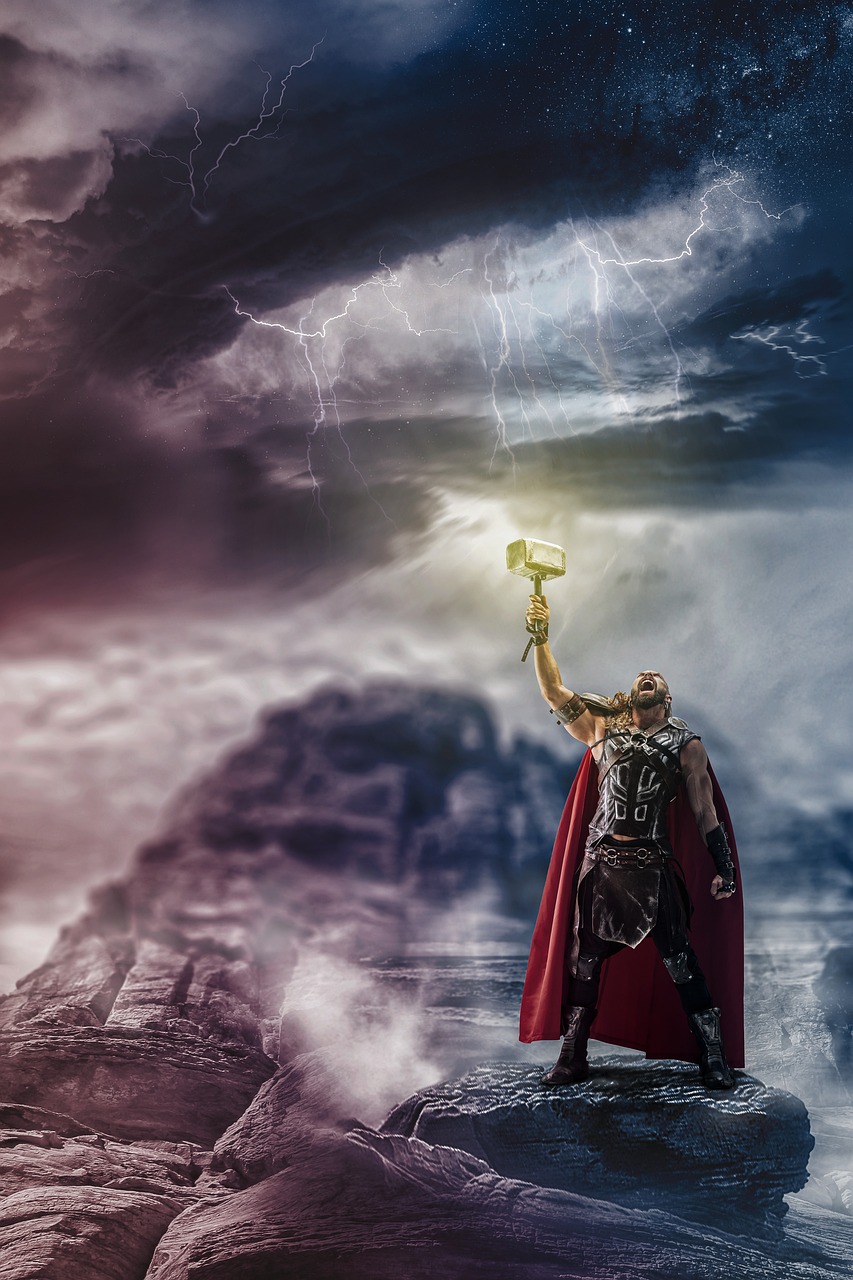Throughout history, the legendary God of Thunder, Thor, once revered by the Vikings, has evolved into a figure of substantial interest, especially in modern culture. This shift has been notably amplified by Chris Hemsworth’s powerful depiction of Thor within the Marvel Cinematic Universe (MCU), transforming the ancient warrior into a contemporary superhero.
Despite its recent surge in popularity, the fascination with Thor is not a new phenomenon. This Norse deity has surged through various forms of pop culture, surviving the test of time and reinventing himself outside the Marvel realm. His image has graced anime, DC comics, streaming platforms, and even classic paintings, demonstrating his extensive influence.
Record of Ragnarok – Streaming on Netflix
In the manga and anime series “Record of Ragnarok,” Thor is portrayed as a colossal figure with long red hair, wielding his iconic weapon, Mjölnir. However, this depiction starkly contrasts the heroic persona seen in Marvel. Here, Thor is a more ruthless god, reveling in violence during combat, driven by a sinister joy in the chaos.
In “Record of Ragnarok,” Thor’s extraordinary strength earns him the title of “Nordic’s Strongest Warrior.” Similar to his Marvel counterpart, he has the capability to summon lightning from his hammer, using this power to smite his foes.
Neil Gaiman’s Sandman
Thor also finds representation in DC Comics, specifically in Neil Gaiman’s “Sandman” series. In the narrative “Season of Mists,” he briefly collaborates with Odin and Loki in an attempt to secure a key to the underworld.
Gaiman’s interpretation is consistent with Thor’s original mythological image, featuring him with red hair, a thick beard, and his trusty hammer. Unlike the morally upstanding Thor of Marvel, this version exhibits a more brutish demeanor, often showcasing a lewd sense of humor.
Wonder Woman #770
In “Wonder Woman #770,” the titular character awakens in a violent conflict within the realm of Norse mythology. Amidst the chaos, she encounters Thor, who makes a dramatic entrance mounted atop a colossal Yeti-like creature. Armed with his legendary hammer, he unleashes devastating lightning strikes upon his foes.
In this DC portrayal, while Thor retains his honorable traits similar to the Marvel rendition, his appearance diverges significantly, donning heavy armor adorned with a lightning bolt and a striking golden helmet.
Dexter’s Laboratory – Available On HBO Max
“Dexter’s Laboratory” offers a humorous twist on Thor, primarily through its segments featuring The Justice Friends, which includes a character named Val Hallen. Val is a parody embodiment of the Viking god, blending Thor’s might with the spirit of rock music, instead of wielding a hammer, he carries a guitar that boasts similar capabilities to Mjölnir.
This comedic take highlights Val’s ability to fly using his guitar, playfully bridging the mythical with modern entertainment.
Ragnarok – Streaming on Netflix
“Ragnarok,” a Norwegian fantasy series on Netflix, follows a teenager named Magne Seier who discovers he is the reincarnation of Thor. Unlike the traditional loud and fierce descriptions of the god, Magne embodies a quieter but firmly principled character.
His physical appearance echoes the Marvel version, showcasing blonde hair and blue eyes while possessing weather-controlling abilities and wielding the mighty Mjölnir to heighten his powers.
History’s Strongest Disciple Kenichi – Available On Hulu
In “History’s Strongest Disciple Kenichi,” Thor appears with a unique twist, depicted as a Japanese Sumo wrestler. This version combines the traits of a muscular physique resembling Chris Hemsworth’s Thor with a traditional sumo style of fighting.
With short black hair and a sleeveless kimono, he demonstrates phenomenal strength and agility but lacks the supernatural abilities typically associated with the Norse god, preferring to rely on his combat skills.
Magnus Chase and the Hammer of Thor
Rick Riordan’s “Magnus Chase and the Gods of Asgard” series brings a fresh perspective on Thor, particularly in its second installment, where the plot centers around the disappearance of his hammer. This portrayal draws parallels with Marvel’s Thor while lending a more playful and dynamic essence to the character, especially in his humorous interactions with Loki.
Interestingly, Thor’s quest to reclaim his hammer by disguising himself as a woman subtly alludes to the ancient poem Þrymskviða, showcasing a blend of humor and mythology.
God of War
In the 2018 video game “God of War,” Thor only has a minor role but is confirmed as an antagonist in the sequel “God of War: Ragnarök,” with Ryan Hurst lending his voice to the character. While some fans were not pleased with the portrayal of Thor in this game, others appreciated the representation of strength and prowess in this interpretation, which diverges from Hemsworth’s representation.
Stargate SG-1 – Available On Hulu
“Stargate SG-1” depicts Thor in a notable scientific twist, where he serves as the Supreme Commander of the Asgard Fleet. This version deviates greatly from human-like characteristics and displays a more monotone personality. Despite these differences, the character retains substantial gravitas and authority, demonstrating that Thor’s essence transcends conventional appearances.
Thor’s Fight With The Giants
Artist Mårten Eskil Winge’s painting “Thor’s Fight with the Giants,” created in 1872, remains a significant representation of Thor in art history. The striking imagery captures the god clashing with giants, summoning lightning and brandishing Mjölnir. Over time, this artwork has been envisaged through modern critiques reflecting themes of xenophobia, demonstrating the evolving interpretations of folklore and artistry.
In all these diverse portrayals, Thor’s character continues to resonate, revealing the timeless nature of mythological figures in popular culture.



